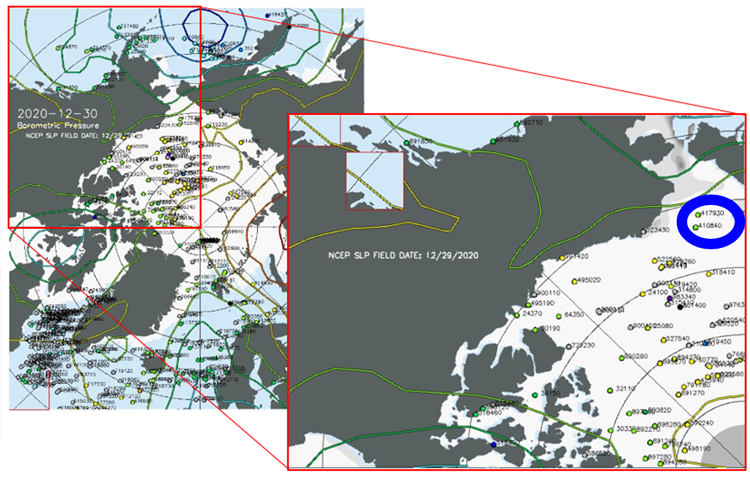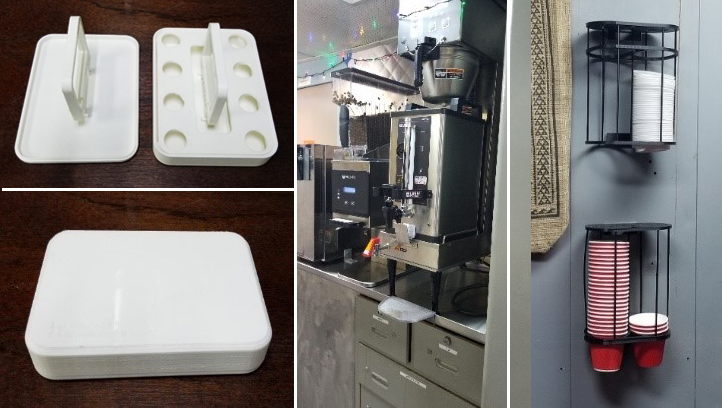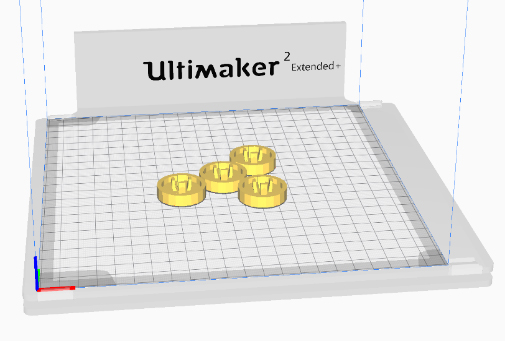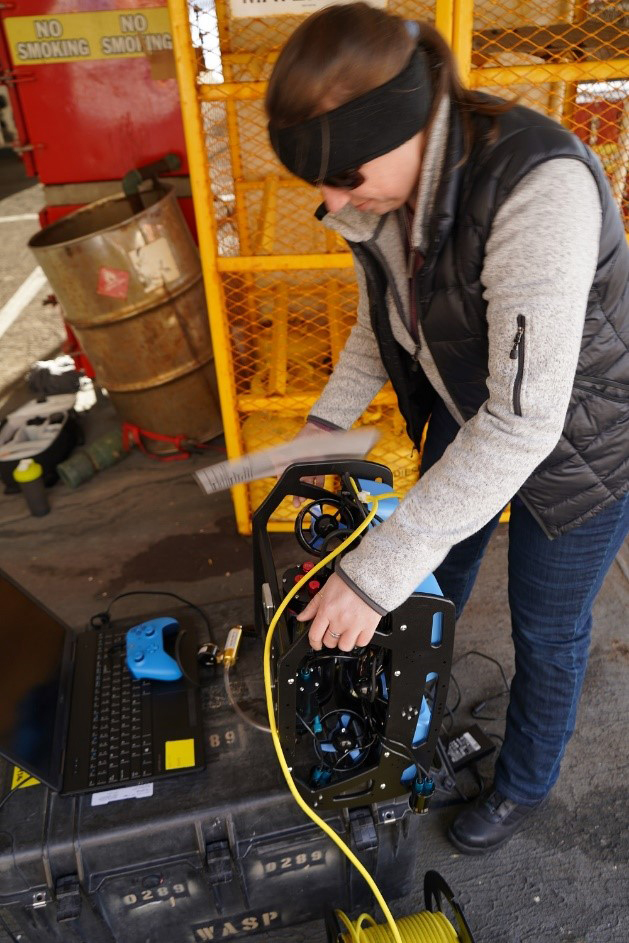Jan. 26, 2021 —

Lt. Lydia Ames, a National Oceanic and Atmospheric Administration corps officer, and Petty Officer 2nd Class Charles Fox discuss where they plan to deploy the ice tracking buoy during the Polar Star deployment. U.S. Coast Guard photos.
As the Coast Guard Cutter Polar Star continues its historic winter deployment to project power and a sovereign presence in the Arctic, Shalane Regan, a member of the Coast Guard Research and Development Center (RDC), is working with other scientists and researchers on board to find ways to operate most effectively in the harsh environment. Regan, a mechanical engineer and researcher with the RDC Surface Branch, shares updates on the ongoing research:
Ice Flow
The U.S. Army Corps of Engineers Cold Regions Research and Engineering Laboratory (CRREL) planned to deploy buoys during this trip to track the flow of ice, but was unable to have a scientist onboard Polar Star because of COVID. Regan teamed up with Lt. Lydia Ames, a National Oceanic and Atmospheric Administration (NOAA) corps officer, to accomplish CRREL’s original planned tasks. U.S. National Ice Center ice analyst Evan Neuwirth and cadets from the U.S. Merchant Marine Academy also helped with this project.
The team successfully deployed three buoys onto ice and into open waters, recording their position at launch. The buoys will help fill in data gaps at the higher latitudes.

The launched buoys are highlighted in the blue circle.
Environmental awareness
One of CRREL’s original goals for the patrol was to observe the Coast Guard icebreaking operations and identify where environmental awareness products and workflows can be incorporated. CRREL also wanted to collect information on the decision-making process involved while navigating through 24/7 ice conditions to support real-time navigation models for the Coast Guard. Items to assist their efforts include:
- Polar Star‘s daily tailored sea ice report products from the National Ice Center include daily ice concentration, 48-hour ice edge forecast, ice drift, wind and weekly estimated ice thickness.
- The embarked ice analyst provides daily briefs to the command, operations team and officer of the deck (OOD) which include ice satellite imagery and analysis.
- The ship receives daily tailored weather forecasts including divert recommendations from Fleet Weather Center San Diego/Norfolk.
- The marine science officer briefs the operations team and OODs daily using forecasts from NOAA’s Ocean Prediction Center on the high seas, and other National Weather Service products (National Data Buoy Center, AFC Marine, etc.) for nearshore transits.
- When operating within the KU-Band footprint for connectivity, commercial weather websites are utilized including Windy and StormSurf.
Wintertime hydrography of Chukchi Sea
The Polar Star crew is working on a research project concerning water flow regimes in the Arctic, specifically the Chukchi Sea, developed by Dr. Robert Pickart of Woods Hole Oceanographic Institute (WHOI). Pickart hypothesizes that water conditions in the Chukchi Sea are influenced by more factors than have previously been studied. Most previous work has investigated the impacts of meltwater and thermodynamic mixing in the summertime and nutrient-rich deep ocean water that is introduced in the wintertime, but Pickart believes that impacts from polynyas (open water surrounded by pack ice) and refreezing leads (fractures in sea ice) may play an equally important role. The data from this season’s deployment will be used to develop a more complete understanding of the hydrology of this dynamic region.
A Healy cruise in early summer 2014 was able to collect data that supported this hypothesis, but there is a significant void of wintertime data. For this deployment, WHOI provided 120 Expendable Conductivity/Temperature/Depth Profiling (XCTD) System instruments to measure temperature and salinity. These data points will give a better picture of what water and nutrient flow look like in the Arctic winter. Polar Star crew members deploy these probes every 12 hours when above 65 degrees North.

Lt. Lydia Ames working with the XCTD system. U.S. Coast Guard photo.
Communications
The Mobile User Objective System (MUOS) was installed on Polar Star to test its abilities at high latitudes in the harsh Arctic winter conditions. Developed for the U.S. Navy by Lockheed Martin, the MUOS is an ultra-high frequency satellite communications system that provides secure connections for mobile forces.
Printing
Regan continues to train crew members aboard Polar Star on use of the Ultimaker 2 Extended+ 3-D printer, previously provided to the icebreaker by the RDC. Regan has designed numerous morale-based and functional items to spark interest and conversations about 3-D printing. Crew members routinely stop by the printer to see what is being fabricated and ask questions.


Items printed include: (top, from left) travel sacrament kit for the chaplain, coffee station drip tray, racks to hold coffee cups and lid, (bottom) replacement parts for the commanding officer’s computer stand. U.S. Coast Guard photos.
On the operational end, a variety of ice is present, providing excellent training for ice pilots. Regan hopes to have an opportunity to evaluate remotely operated vehicle performance during some of this training.

RDC researcher Shalane Regan works with a remotely operated vehicle. U.S. Coast Guard photo.
For more information:
RDC utilizing Polar Star deployment for research on challenges of Arctic winter
Research, Development, Test and Evaluation program page and Research and Development Center page